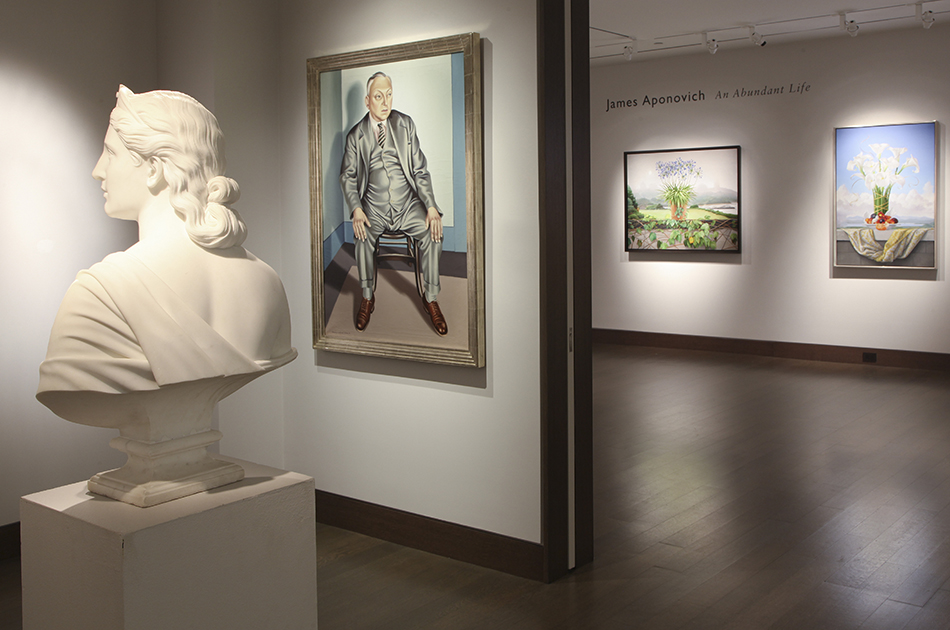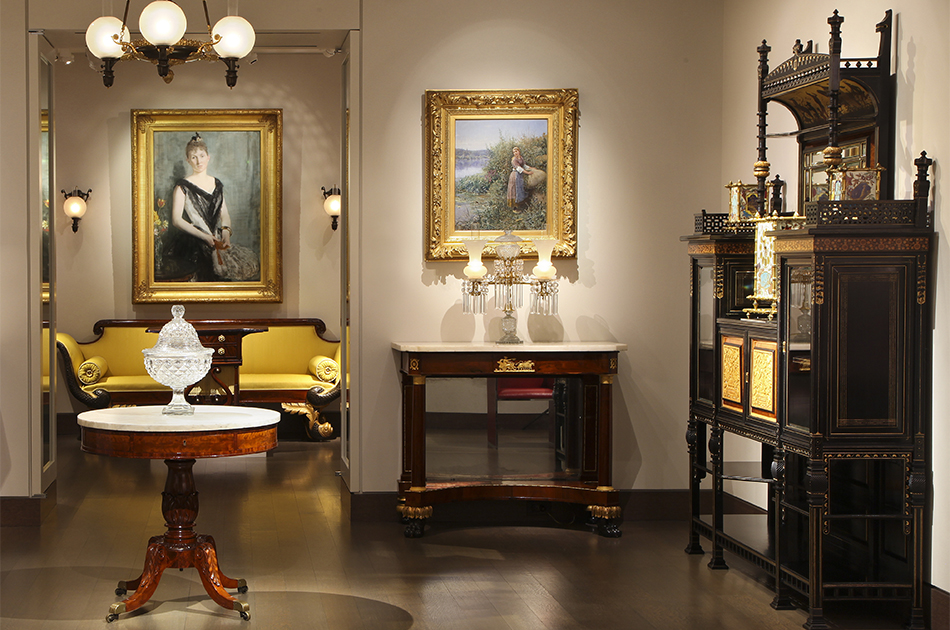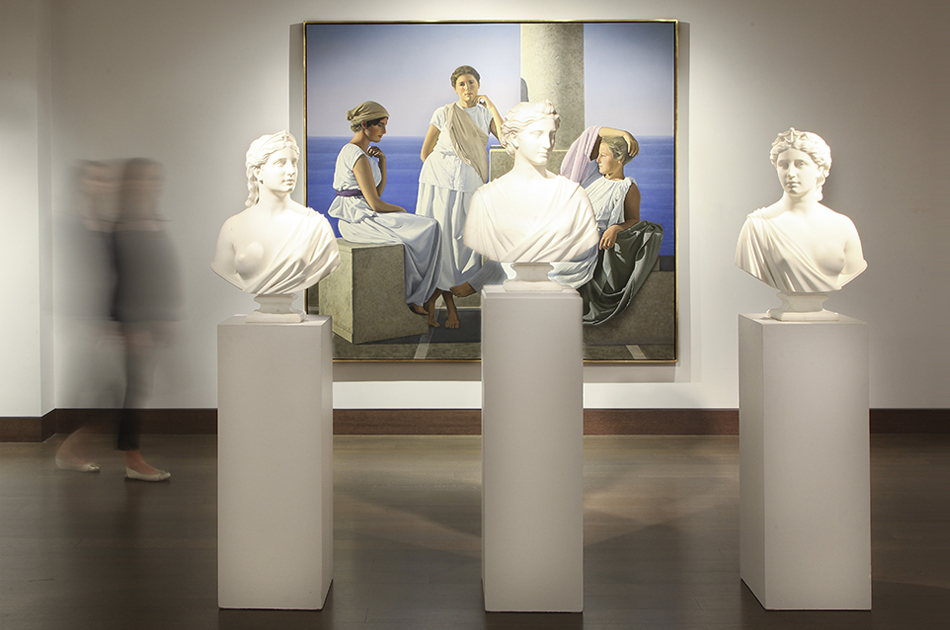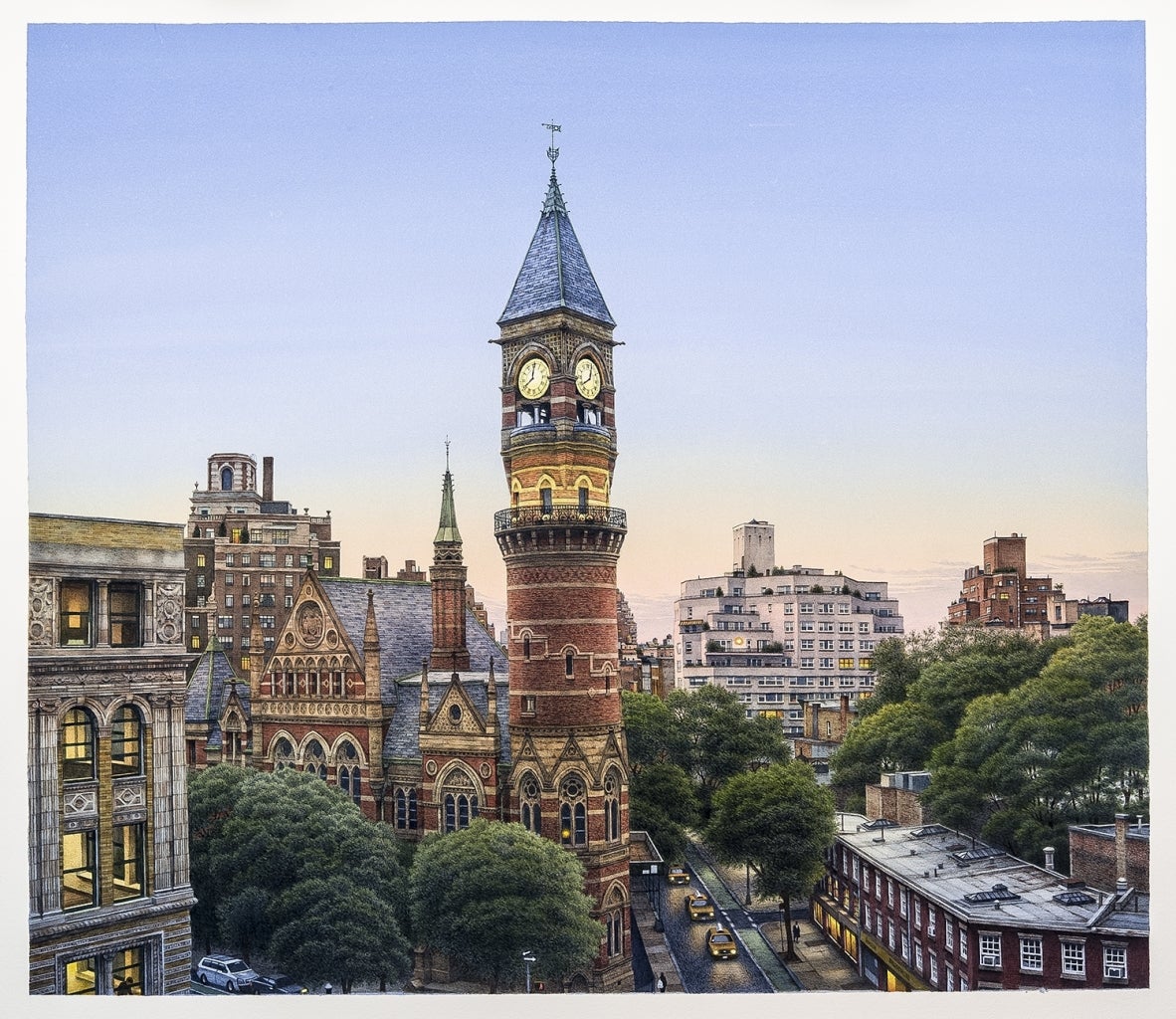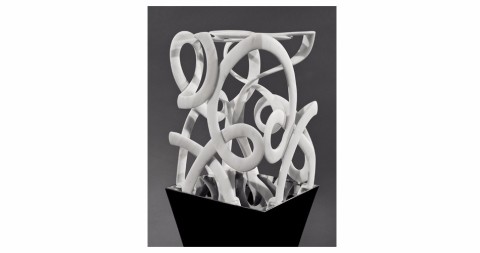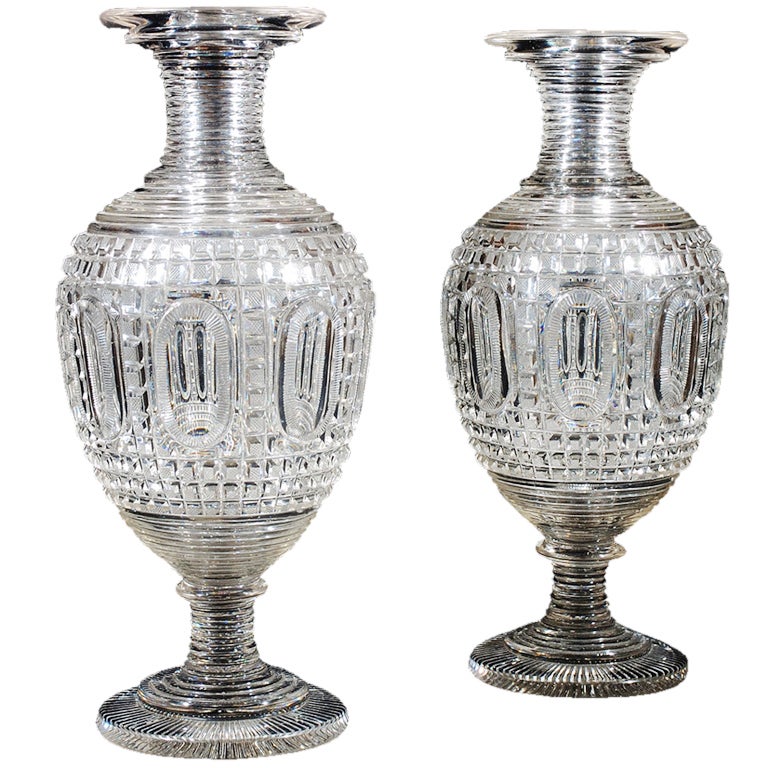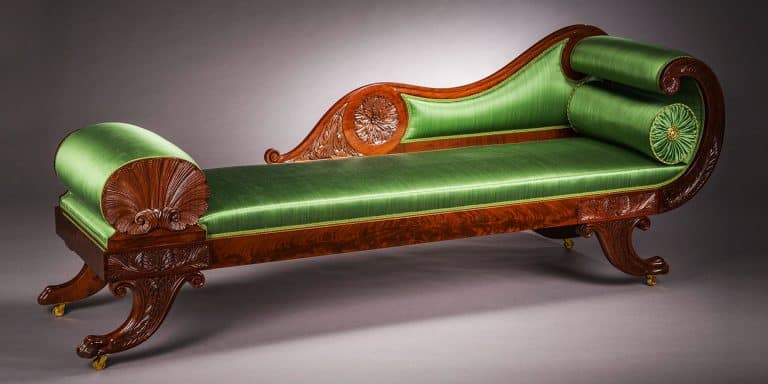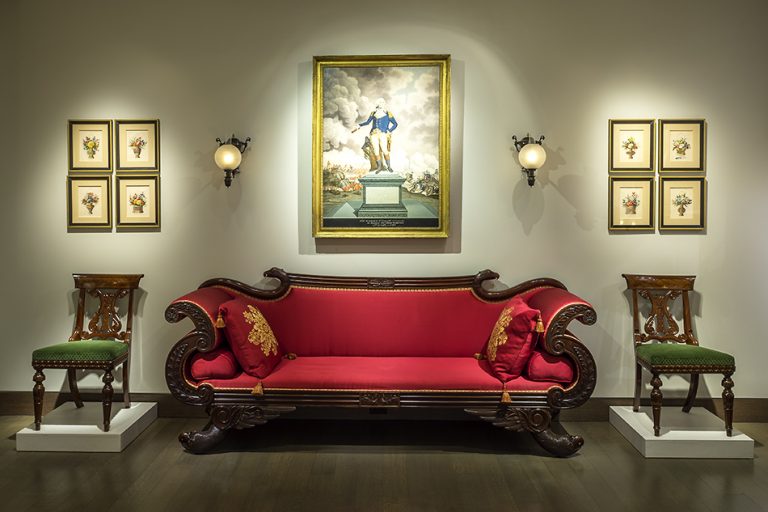
January 8, 2014Together Stuart Feld and his daughter, Liz, run the 62-year-old New York gallery Hirschl & Adler. Above: The office of Stuart Feld features a prime 1826 Audubon painting and a table (1815–19) by Charles-Honoré Lannuier.
Let’s go to Dad’s office,” says Elizabeth Feld, the managing director of Hirschl & Adler Galleries, when I arrive there one rainy late-fall morning. On the way to see “Dad,” who is Stuart Feld, the gallery’s president, the impossibly affable Elizabeth, who goes by Liz, whisks me through a show of 19th-century painting and sculpture juxtaposed with thematically similar contemporary examples, then through a doorway and finally into a viewing room with a long, plush sofa and a warm atmosphere. Pausing momentarily, she says, “We wanted the backdrop of the gallery to be very simple and beautiful, so that anything from the eighteenth century to the present would look good against it. Because that’s who we are.”
Indeed, the 62-year-old gallery offers a notably broad range of material under a single roof. Although known as a premier source for American fine and decorative art, especially portraiture and genre paintings of the 19th century and neoclassical furniture, Hirschl & Adler also shows European porcelain and painting, and it represents a roster of 22 contemporary artists who work in a representational mode. The Felds and their staff of specialists can offer everything from a mahogany secretary by Duncan Phyfe to a John Frederick Peto tromp l’oeil still life to a Barbizon school landscape of the French countryside and a contemporary marble sculpture straight from the studio of MacArthur “genius” Elizabeth Turk. They also handle prime examples of American modernist paintings (Charles Sheeler, Joseph Stella), as well as the estate of outsider artist James Edward Deeds Jr. They showed both modernist paintings and Deeds’s work at Art Basel Miami Beach in early December.

A pair of “Old Paris” vases (1820–25) depicting scenes from the War of 1812 and of French harbors sit atop an early-19th-century rosewood secretary attributed to Philadelphia furniture maker Joseph B. Barry.
“We are so broad,” says Liz. “The staff really tries to keep up with the changing market. And yet we have this tremendous history.”
To move forward without sacrificing its legacy, the gallery recently made a big change: For the last 30-plus years, it was located in a town house on East 70th Street. Three years ago, however, it relocated to Fifth Avenue and 57th Street, where it occupies 13,000 square feet on the fourth floor of the Crown Building. “We moved to significantly increase our space and also to be able to keep more inventory close by,” explains Liz. “We also wanted it to feel like a domestic space, so we created these decorative vignettes to show people how they can combine fine and decorative art, and that they can really connect with things.”
As we head down a hallway, we pass the research library — a well-used gallery resource. “We write up a short thesis on every object that comes through here so that all the information about it is put in one place before it’s sold,” Liz explains. “We are the custodians of this material for a short time, and it’s our job to make sure that the provenance travels along with each piece on its journey.”
At last, we arrive at “Dad’s office.” “How should we do this Lizzie?” Stuart asks, and father and daughter each choose one of a pair of Boston armchairs to settle into. I’m then invited to sit between them on a circa-1826 sofa attributed to Isaac Vose of Boston. Upholstered in claret-colored fabric, the sofa has eagle-claw feet and a carved eagle head at each end of the crest rail. In the middle of this arrangement is a rare marble-topped center table by Charles-Honoré Lannuier. “This table is one of the greatest pieces of American neoclassical furniture that we have ever handled,” says Liz. “After all these years in the business,” Stuart quickly adds, “I’m amazed at what continues to be available.”

In his office, Stuart stands in front of one of a pair of girandole mirrors, made in Philadelphia in 1810, with his hand resting on a ca. 1826 sofa attributed to Isaac Vose of Boston.
The two have the easy rapport of colleagues who communicate in shorthand and share a mutual admiration of what each brings to the business. And they are, of course, family. “The dynamic that we have at work is very professional but very open and honest,” says Liz. “We are the best of friends — and he’s the best babysitter for my kids.” Stuart affirms with delight: “We’re on for tonight!”
And what’s it like to work with your own kid? “If you have to work for a living, you might as well have fun,” says Stuart, who at the same time emphasizes his daughter’s crucial role in the gallery’s success. “We all have our own little specialties,” says Stuart. “Liz heads our department of American furniture and decorative art, which has become a really significant part of our business.”
When Feld started out nearly 50 years ago, American furniture was not taken seriously as a scholarly field or as a market. After studying architectural history at Princeton, he pursued a master’s in fine art at Harvard, where he wanted to write a thesis on American art. “The department advised me that they were not interested, that I had to do something more important,” he says. He ultimately joined the staff of the Department of American Paintings and Sculpture at the Metropolitan Museum of Art, where he wrote the first catalogue of the museum’s early-American paintings collection. In 1967, not eager to work with the Met’s new director, Thomas Hoving, Feld resigned. He soon began receiving job offers from the art-dealing world. He accepted one from Hirschl & Adler (which was founded in 1952 by Norman Hirschl and Abraham Adler). By 1982, he was the gallery’s sole owner.
“Dad never told me this is what I was supposed to do,” says Liz, who joined the gallery 14 years ago. She studied art history at the University of Pennsylvania, spent a few years in strategic marketing and PR for the fashion and beauty industries and then went to London and earned a master’s in the history of European fine and decorative arts at the Sotheby’s Institute. “American furniture was part of my life growing up,” she says. “I wanted to know what influenced it.” When she graduated, she called her father and said she was ready to work for the gallery. “I got off the plane from London, and the next day I was here.”

Liz stands with a white-marble sculpture by Elizabeth Turk, one of 20-plus contemporary artists represented by the gallery.
Her role goes beyond sales or specialized knowledge. “My job is to keep the gallery relevant,” she says. “The business is the same in terms of our interests and focus on quality and authenticity. But things change, and we rebranded a little bit to be more appealing to a younger clientele” — and not just hard-core collectors of American paintings. She believes the market is strong overall. “We work with the top five percent of production in our particular area. That market has not softened,” she says. Stuart adds: “We get many calls from people asking us to represent them when buying at auction, to consult about quality and price. And if someone doesn’t want to sell at auction, we don’t have a lot of competition as to where else they can go.”
Right now, the Felds are looking ahead to their biggest event of the year: New York’s Winter Antiques Show, which runs from January 24 to February 2. “Our history with the show is very special,” says Liz. The gallery has been participating consistently for about 40 years, and Liz has gone from being a little girl visiting her father there to a grown woman working at the booth and now, for the third year, chairing the Dealers’ Committee. “I’m happy to say that my colleague Patrick Bell and I had a lot to do with representing the dealers’ wishes to elevate the fair,” she says, referring to the upgraded sets and aesthetic of the event. “We want to be the great American show.” The 73 dealers in the fair, she says, “belong to a very exclusive club. It’s our greatest fair of the year. It’s where we show our house taste.” To which Stuart replies admiringly: “Well put.

